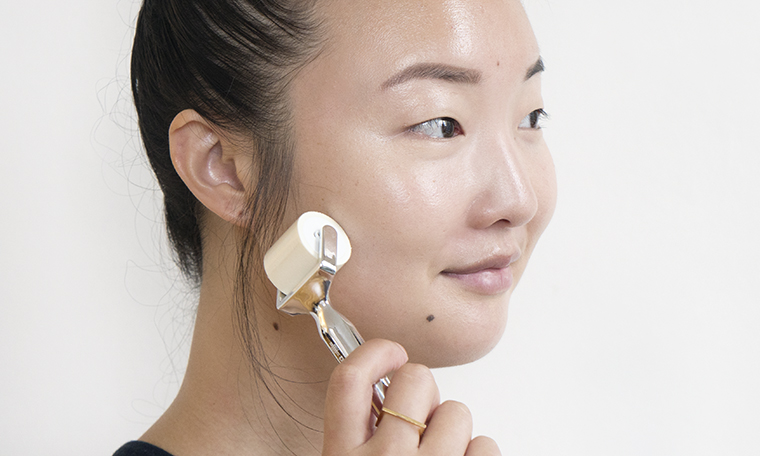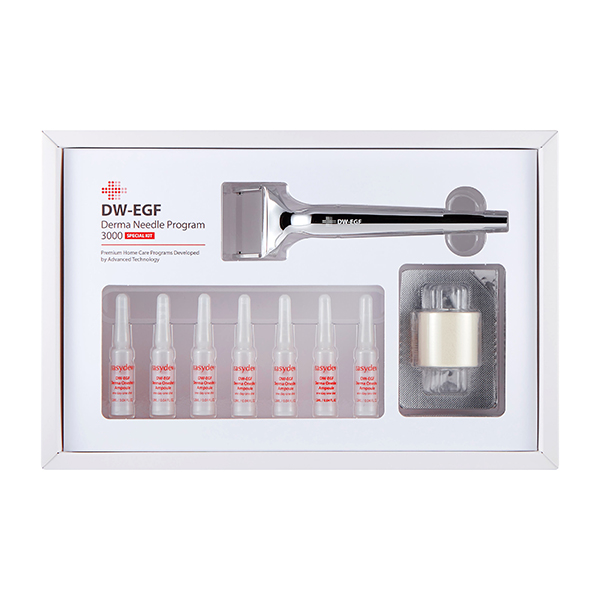Does the thought of rolling hundreds of tiny needles across your face terrify you? Don’t worry, you’re not alone. There’s a lot of hype and even more confusion around what exactly derma rolling is. To clear things up, we reached out to two dermatologists and peppered them with questions. Find out what they had to say below!
What is derma rolling and what does it do?
“Derma rolling is the process by which you use a device studded with microscopic needles that you roll over the skin to create microscopic holes in the skin surface,” says Dr. Kavita Mariwalla, a Long Island, New York-based dermatologist.
These microneedles puncture the skin and stimulate the production of new collagen, which is helpful for two reasons. The first is that as we age, our collagen supply slows down. An increase of collagen and elastin due to derma rolling can help reduce signs of aging like fine lines and wrinkles. The stimulation of collagen can also help to smooth atrophic scars that are a result of cystic acne.
A new trend in the space is dissolving mircroneedle rollers that penetrate skin with crystallized serum that dissolves when it comes in contact with the moisture beneath the skin’s surface. This makes products that use the technology less irritating than traditional rollers.
Derma rolling can be done at home or in the office of a dermatologist, depending on the size of the needle.
What size derma roller should you use?
Derma rollers come with needles that can vary in size from 0.25mm to 2.0mm. The size of the needle you choose is dependent on what skin issue you’re trying to target.
For example, 0.25mm needles are best for fine lines and 0.75mm needles are great for deep-set wrinkles or atrophic scars.
Dr. Joshua Zeichner, the director of cosmetic dermatology at Mt. Sinai Hospital in New York City explains, “the larger the diameter of the needles, the larger the wound created in the skin. The smaller the needle, the less damage and likely less benefit.”
However, Dr. Mariwalla suggests sticking with the 0.5mm size for home use. This is because, “greater penetration than 0.5mm can be too much for the face. In the office, we can professionally assess the depth of wrinkles and then pick a depth appropriate for the results we are trying to achieve.”
What types of serums/treatments should you use while derma rolling?
Another benefit of derma rolling is the enhanced penetration of serums. Dr. Zeichner tells us, “the derma roller creates microscopic channels that help enhance penetration of active ingredients across the surface of the skin.”
It is, however, best to stick with simple yet effective ingredients like hyaluronic acid and peptides rather than harsh ones like retinol. “You have to be very careful about this because if you use the wrong serum you can end up with scarring and complications,” says Dr. Mariwalla. If you’re not sure which one to use, consult with your dermatologist.
How often should you derma roll to see results?
Opinions are divided on this one. Dr. Mariwalla suggests using a derma roller no more than once every two weeks. “You want to give the skin a chance to heal. Second, skin turnover occurs once every 28 days so using a derma roller more often may lead to damage rather than improvement,” she says.
Dr. Zeichner feels it’s okay to derma roll once a week. “Just avoid using it if you are also using any other exfoliating treatments, peels, or scrubs,” he says.
While their answers may differ, both echo the same warning that less is more. The important thing to take from this advice is to listen to your skin. With any derma rolling procedure you’re likely to experience some form of redness and sensitivity. But, these symptoms are usually short-term and disappear overnight. If you’re experiencing long-term irritation, it might be your skin telling you to give it a break.
What is your advice for those who want to try derma rolling at home?
The general consensus here is to make sure you’re being as clean as possible. While derma rolling at home can actually save you a lot of time and money, it’s also important to remember the risks.
“Do not use a derma roller if your skin is open or infected and do not share a derma roller,” says Dr. Zeichner.
As with any form of skin care, it’s important to educate yourself and be aware of anything that may cause adverse reactions.
What We Recommend
If you’re nervous about the risks associated with derma rolling, try a product with dissolving microneedles. As we mentioned earlier, this type of derma roller is a gentler, painless alternative to the traditional.
One that we’re loving right now is the Easydew Derma Roller. The “needle shots” (which get attached to the reusable roller) come individually packaged and are meant to be discarded after use so you don’t have to worry about sanitizing them. They’re made with the protein EGF and hyaluronic acid and penetrate below the skin’s surface for maximum efficacy without the risks of scarring or hyperpigmentation.
The roller is meant to be used once a week in conjunction with the brand’s DW-EGF Oneshot Ampoule that contains EGF and niacinamide for a brighter, more youthful appearance.
Bottom Line
Derma rolling has become popular for a reason; the practice’s proven ability to smooth fine lines and scars make it a go-to for many people. However, it’s important to take the right precautions if you’re going to try it at home. Always be diligent and sanitize your roller before and after each to use to avoid unnecessary side effects.









